Team
Copyright : Laboratoire LEMAR- 2018
Team
The effects of global change linked to both climate disruption and increased anthropogenic pressures are modifying the structure and functioning of ecosystems. The complexity observed in nature (systems of interactions) allows ecosystems to persist, maintain or transform themselves while adapting to forcing variables. Ecological processes integrating biological, chemical, physical and human variables allow, among other things, to maintain the productivity and stability of ecosystems. Any imbalance in any of these variables increases the risk of instability, threatening the sustainability of the ecosystem. Coastal ecosystems, which are the most vulnerable to these pressures, may reach thresholds of no return, reducing their long-term resilience. The ecosystem services naturally provided by these ecosystems (resources, filtration, bioremediation, sediment stabilisation, blue carbon, etc.) are weakened, which in turn impacts the relationship between human populations and their environment. The research themes of the DISCOVERY team focus on the adaptability and resilience of coastal ecosystems to global changes at different temporal and spatial scales. Within this framework, the DISCOVERY team focuses on the study of populations and communities, their habitats, and associated socio-ecological functions, with a view to understanding habitat/biodiversity relationships and the functioning of socio-ecosystems, for predictive purposes of planning, management, restoration and conservation in the face of global change.
.
Populations and communities within ecosystems, whether benthic or pelagic, animal or plant, incorporate the effects of global change into their structure and functioning. It is essential to deconvolute the effects of natural variations from those of anthropogenic pressures on the maintenance of biodiversity and ecological functions (e.g. biogeochemistry, material flows, resources, recruitment, migration). The biodiversity of ecosystems is understood here in the broadest sense and is expressed in taxonomic, genetic and functional terms, from the scale of the species to that of ecosystems.
The DISCOVERY team’s research strategy is defined in four Research Areas (RA1-RA4, see figure) which aim to characterise how natural and anthropogenic environmental constraints structure i) the biodiversity of populations and communities (RA1), ii) the life history of individuals, the dynamics of populations and their migrations (RA2), and iii) energy and matter flows within populations, communities and ecosystems (RA3). Ultimately, our research aims to provide tools for understanding the functioning of past and present ecosystems, including their human component, in order to help implement policies for the management, planning and conservation of socio-ecosystems (AR4).

Conceptual diagram of the DISCOVERY team
The work of the DISCOVERY team is carried out in all latitudes. In temperate environments, the DISCOVERY team has acquired long series of past (paleoecology and archaeology) and current observations that provide the starting points for the analysis of socio-ecosystem trajectories. In the polar, sub- and inter-tropical regions, where scientific knowledge is still lacking, the DISCOVERY team will continue its disciplinary research (ecology, biology and biogeochemistry) while initiating interactions between natural and human sciences.
The geographical areas subject to work within the DISCOVERY team are:
Taking into account the complexity of ecosystems at different spatial and temporal scales will be made possible by the combination of multiple tools and approaches developed and used by the team, combining observation, experimentation and modelling:
All of this work will be carried out within the framework of large-scale projects on a national, European and international scale (ANR, Biodiversea, Green deal, ERC, RISE, LEFE/EC2CO, OFB, Flagship EUR ISblue, Belmont Forum , ECOSUD, MITI CNRS…), currently in progress or to come (to be submitted), mostly supported by members of the DISCOVERY team. They will also fit into major international networks and/or laboratories (IRP BeBEST2, LMI Discoh 2, Tapioca, GDRi, GDR LIGA and JEAI).
Research axis 1: Description and analysis of biodiversity
Animation: Cécile Klein (UBO), Gauthier Schaal (UBO)</p > This research axis will endeavor to describe the spatial and temporal variability of biodiversity (benthic, pelagic, and microbial) observed on different interfaces (coastal waters, estuaries, mudflats, seagrass beds, rocky foreshore, mangroves, reefs, fjords, continental shelf , land-sea continuum) and at all latitudes. In order to understand this variability and anticipate the evolution of communities and primary production in the face of increasing anthropogenic pressures, it will also be necessary to understand the link between this variability and the spatio-temporal variability of environmental conditions.
The specific objectives of this Research Axis aim to:
Projects associated with this theme: REBENT and DCE monitoring (OFB, Brittany region, DREAL, Water Agency), emblematic BLUE OCEAN project (ISblue), MANGROVES and MALAG projects (OFB), Objective Plankton (Region), RESTROPH (Agency water, FEAMP), IRL BeBEST 2, GDR LIGA.
Research axis 2: Life cycles and population dynamics
Animation: Emmanuelle Cam (UBO ), Laure Pecquerie (IRD), Yoann Thomas (IRD), Stéphane Pouvreau (Ifremer)
Marine populations respond to the conditions of their habitat and the fluctuation of surrounding resources. In the current context of multiple and growing environmental pressures, studying the effect of environmental factors on the life cycle of organisms and the resulting population dynamics is a priority research action. In line with RA 3 of the previous five-year period, this new RA extends its scope of study to all phases of the life cycle and aims to go as far as the spatial and temporal dynamics of populations under environmental constraints. . This will include assessing the importance of the variability of individual life history traits at the population level.
More specifically, this RA focuses on the effects of spatio-temporal changes in environmental conditions on the different phases of the life cycle of marine species and their consequences on the dynamics and biogeography of populations. This requires a study of development, growth, reproduction and survival performance at the individual level and of the phenology, dispersal, migration, connectivity and recruitment capacities at the population level. This RA uses various relevant and well-known biological models from our laboratory (marine invertebrates, fish, birds, phytoplankton, macroalgae) and implements a wide range of tools in or ex natura, in interaction with other RAs, to study the spatio-temporal processes around the triptych: Observation, Modeling and Experimentation.
This better understanding of the response of individuals and populations to current pressures will make it possible to propose tools for predictions and to consider solutions for the conservation, restoration or sustainable use of marine resources. This RA will be in strong interaction with the PANORAMA team on questions of intraspecific variability (RA: Population variability and evolutionary potential in the face of environmental constraints).
The specific objectives of this RA are to:
Projects associated with this theme: ANR IROCWA, MASCOET projects (France Filière Pêche), FOREVER (FEAMP), and ECOSCOPA-VELYGER (DPMA), LMI Discoh 2.
Research Axis 3: Study of matter and energy transfers within populations, communities and ecosystems
Animation: Anne Lebourges-Dhaussy (IRD), Anne Lorrain (IRD), Philippe Pondaven (UBO)
The flows of energy, elements and their compounds are addressed at different levels of integration of the living world: i.e. from the individual to the population, the community and the ecosystem. This RA aims to describe and understand how environmental pressures, whether biotic, abiotic, of natural or anthropogenic origin, influence the transfer of matter and energy within the environments taken at all the scales mentioned above. Material transfers of major elements (N, C, P) but also of certain metals (e.g. Hg) between the marine environment and benthic and/or pelagic organisms will thus be studied according to the physiology of the organisms, their diet and food ecology, their bioturbation activities, intra and interspecific interactions and environmental conditions. Fluxes are understood here from regional to global, and from littoral zones to the open ocean, thus including studies on the continuum and at the different interfaces.
These studies are carried out on several “model study objects” (species, population, communities or ecosystems) in connection with the other RAs of the DISCOVERY team which deal more specifically with the dynamics of populations or metapopulations, but also with the RAs of the CHIBIDO team which address questions related to the speciation of chemical elements, biogeochemical cycles related to ocean dynamics and along the land-sea continuum.
The specific objectives of this RA are distinguished according to the level of organization addressed:
Projects associated with this theme: ANR HIPPO and SOLAB, OMEGA emblematic project (ISblue), COMEBACK projects (NSC Poland), DiNAMIC (LEFE-EC2CO), MICROPAC (LEFE), LMI TAPIOCA, GDR LIGA.
Research axis 4: Observation, ecosystem dynamics and socio-ecological transition
Animation: Olivier Gauthier (UBO) and Olivier Ragueneau (CNRS)
All of the work from AR1 to AR3, resulting from observation, experimentation and modelling, from the scale of the individual to that of ecosystems, produces extremely complex data sets. This complexity increases further during the passage from the study of the ecosystem to that of the socio-ecosystem, in particular when the human dimension is taken into account not only as a forcing but also in the feedbacks of the variations of the environment. on human activities along the land-sea continuum. The objective of this AR4 is to co-produce new descriptors of the complexity of these socio-ecosystems making it possible to facilitate, thanks to the strengthening of interdisciplinarity between the natural and engineering sciences and the human and social sciences , as well as a very strong rapprochement with the actors of the territories, the implementation of an adaptive co-management of the socio-ecosystems studied from a perspective of sustainability (eg SDG 14).
In order for this complexity to be truly integrated into the sustainability decision, we must first be able to implement the joint analysis of observation series that differ in their characteristics, in particular the frequency, the effort, and the spatial distribution of the sampling, but also by the variables measured and the space-time explored. This approach is then only possible in a framework where these initial series are first used to describe the trajectories of each of the systems studied and where the analysis and comparison of the latter become the focal point of the study. Such a framework is proposed here for the ecology of communities because of the possible combination of the multiple tools of the team and we wish to extend it to the socio-ecosystem approach. The interdisciplinary approach is therefore essential, for example to combine long time series from paleo-ecology and archeology, series of observations at high spatial and temporal resolutions using statistical, acoustic, imagery or remote sensing, or even to combine the ecological analysis of a pressure-response type scenario with more social and economic analyzes (themes 3 and 4 of ISblue, strategic program “Environmental integration” of the ITE FEM) .
Dealing with the relevance of these developments with regard to the issue of sustainability also involves moving from inter- to transdisciplinarity by developing close interactions with the various actors in the territories studied. This will make it possible to co-construct scenarios to simulate the impacts of climate change and local anthropization and to carry out socio-ecological experiments, as currently developed in the network of workshop areas. These experiments will be intended to stimulate changes in practices on land and at sea and to study their consequences, both on the environment and on human activities.
Projects associated with this theme: REBENT monitoring (Brittany Region), BIOGEOMORPHO project (ISblue), GDR LIGA, RISE Paddle, ZABRI workshop area, Plankton objective, ANR Appeal.



 https://www-iuem.univ-brest.fr/lemar/wp-content/uploads/2018/10/pequerie-laure.jpg
1080
1920
sherve@univ-brest.fr
https://www-iuem.univ-brest.fr/lemar/wp-content/uploads/2018/10/logo-lemar-big.png
sherve@univ-brest.fr2018-10-29 10:15:382023-05-12 10:09:11Laure PECQUERIE
https://www-iuem.univ-brest.fr/lemar/wp-content/uploads/2018/10/pequerie-laure.jpg
1080
1920
sherve@univ-brest.fr
https://www-iuem.univ-brest.fr/lemar/wp-content/uploads/2018/10/logo-lemar-big.png
sherve@univ-brest.fr2018-10-29 10:15:382023-05-12 10:09:11Laure PECQUERIE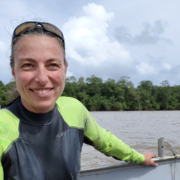 https://www-iuem.univ-brest.fr/lemar/wp-content/uploads/2025/01/PhotoMars20022.jpg
1920
2560
sherve@univ-brest.fr
https://www-iuem.univ-brest.fr/lemar/wp-content/uploads/2018/10/logo-lemar-big.png
sherve@univ-brest.fr2021-04-09 10:51:412022-04-06 16:35:52Emma MICHAUD
https://www-iuem.univ-brest.fr/lemar/wp-content/uploads/2025/01/PhotoMars20022.jpg
1920
2560
sherve@univ-brest.fr
https://www-iuem.univ-brest.fr/lemar/wp-content/uploads/2018/10/logo-lemar-big.png
sherve@univ-brest.fr2021-04-09 10:51:412022-04-06 16:35:52Emma MICHAUD https://www-iuem.univ-brest.fr/lemar/wp-content/uploads/2018/10/schaal-gauthier.jpg
1080
1920
titodemora
https://www-iuem.univ-brest.fr/lemar/wp-content/uploads/2018/10/logo-lemar-big.png
titodemora2022-04-07 10:21:092022-04-07 10:54:57Gauthier SCHAAL
https://www-iuem.univ-brest.fr/lemar/wp-content/uploads/2018/10/schaal-gauthier.jpg
1080
1920
titodemora
https://www-iuem.univ-brest.fr/lemar/wp-content/uploads/2018/10/logo-lemar-big.png
titodemora2022-04-07 10:21:092022-04-07 10:54:57Gauthier SCHAAL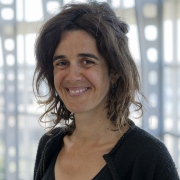 https://www-iuem.univ-brest.fr/lemar/wp-content/uploads/2018/09/Lorrain-Anne-3.jpg
1080
1920
sherve@univ-brest.fr
https://www-iuem.univ-brest.fr/lemar/wp-content/uploads/2018/10/logo-lemar-big.png
sherve@univ-brest.fr2022-06-16 15:04:542022-06-16 15:20:08Anne LORRAIN
https://www-iuem.univ-brest.fr/lemar/wp-content/uploads/2018/09/Lorrain-Anne-3.jpg
1080
1920
sherve@univ-brest.fr
https://www-iuem.univ-brest.fr/lemar/wp-content/uploads/2018/10/logo-lemar-big.png
sherve@univ-brest.fr2022-06-16 15:04:542022-06-16 15:20:08Anne LORRAIN https://www-iuem.univ-brest.fr/lemar/wp-content/uploads/2018/05/bonnin-marie-main2.jpg
1080
1920
sherve@univ-brest.fr
https://www-iuem.univ-brest.fr/lemar/wp-content/uploads/2018/10/logo-lemar-big.png
sherve@univ-brest.fr2021-05-05 16:12:362022-05-10 17:47:59Marie BONNIN
https://www-iuem.univ-brest.fr/lemar/wp-content/uploads/2018/05/bonnin-marie-main2.jpg
1080
1920
sherve@univ-brest.fr
https://www-iuem.univ-brest.fr/lemar/wp-content/uploads/2018/10/logo-lemar-big.png
sherve@univ-brest.fr2021-05-05 16:12:362022-05-10 17:47:59Marie BONNIN https://www-iuem.univ-brest.fr/lemar/wp-content/uploads/2018/06/Brehmer-Patrice.jpg
1080
1920
sherve@univ-brest.fr
https://www-iuem.univ-brest.fr/lemar/wp-content/uploads/2018/10/logo-lemar-big.png
sherve@univ-brest.fr2018-05-28 14:22:552021-01-04 17:04:16Patrice BREHMER
https://www-iuem.univ-brest.fr/lemar/wp-content/uploads/2018/06/Brehmer-Patrice.jpg
1080
1920
sherve@univ-brest.fr
https://www-iuem.univ-brest.fr/lemar/wp-content/uploads/2018/10/logo-lemar-big.png
sherve@univ-brest.fr2018-05-28 14:22:552021-01-04 17:04:16Patrice BREHMER https://www-iuem.univ-brest.fr/lemar/wp-content/uploads/2018/10/cam-emmanuelle.jpg
1080
1920
sherve@univ-brest.fr
https://www-iuem.univ-brest.fr/lemar/wp-content/uploads/2018/10/logo-lemar-big.png
sherve@univ-brest.fr2018-10-03 17:22:302021-01-04 17:05:00Emmanuelle CAM
https://www-iuem.univ-brest.fr/lemar/wp-content/uploads/2018/10/cam-emmanuelle.jpg
1080
1920
sherve@univ-brest.fr
https://www-iuem.univ-brest.fr/lemar/wp-content/uploads/2018/10/logo-lemar-big.png
sherve@univ-brest.fr2018-10-03 17:22:302021-01-04 17:05:00Emmanuelle CAM https://www-iuem.univ-brest.fr/lemar/wp-content/uploads/2022/01/Cavallo-Marianna.jpg
1080
1920
sherve@univ-brest.fr
https://www-iuem.univ-brest.fr/lemar/wp-content/uploads/2018/10/logo-lemar-big.png
sherve@univ-brest.fr2022-01-07 11:44:012024-11-14 09:14:21Marianna CAVALLO
https://www-iuem.univ-brest.fr/lemar/wp-content/uploads/2022/01/Cavallo-Marianna.jpg
1080
1920
sherve@univ-brest.fr
https://www-iuem.univ-brest.fr/lemar/wp-content/uploads/2018/10/logo-lemar-big.png
sherve@univ-brest.fr2022-01-07 11:44:012024-11-14 09:14:21Marianna CAVALLO https://www-iuem.univ-brest.fr/lemar/wp-content/uploads/2018/05/chauvaud.jpg
1080
1920
sherve@univ-brest.fr
https://www-iuem.univ-brest.fr/lemar/wp-content/uploads/2018/10/logo-lemar-big.png
sherve@univ-brest.fr2018-05-28 14:22:592021-01-04 17:06:42Laurent CHAUVAUD
https://www-iuem.univ-brest.fr/lemar/wp-content/uploads/2018/05/chauvaud.jpg
1080
1920
sherve@univ-brest.fr
https://www-iuem.univ-brest.fr/lemar/wp-content/uploads/2018/10/logo-lemar-big.png
sherve@univ-brest.fr2018-05-28 14:22:592021-01-04 17:06:42Laurent CHAUVAUD https://www-iuem.univ-brest.fr/lemar/wp-content/uploads/2023/02/Comte_Adrien-main.jpg
1080
1920
sherve@univ-brest.fr
https://www-iuem.univ-brest.fr/lemar/wp-content/uploads/2018/10/logo-lemar-big.png
sherve@univ-brest.fr2023-02-17 12:25:342023-02-17 12:30:19Adrien COMTE
https://www-iuem.univ-brest.fr/lemar/wp-content/uploads/2023/02/Comte_Adrien-main.jpg
1080
1920
sherve@univ-brest.fr
https://www-iuem.univ-brest.fr/lemar/wp-content/uploads/2018/10/logo-lemar-big.png
sherve@univ-brest.fr2023-02-17 12:25:342023-02-17 12:30:19Adrien COMTE https://www-iuem.univ-brest.fr/lemar/wp-content/uploads/2018/06/Flye-ste-Marie-Jonathan.jpg
1080
1920
sherve@univ-brest.fr
https://www-iuem.univ-brest.fr/lemar/wp-content/uploads/2018/10/logo-lemar-big.png
sherve@univ-brest.fr2018-06-18 17:25:232022-05-18 13:41:40Jonathan FLYE SAINTE MARIE
https://www-iuem.univ-brest.fr/lemar/wp-content/uploads/2018/06/Flye-ste-Marie-Jonathan.jpg
1080
1920
sherve@univ-brest.fr
https://www-iuem.univ-brest.fr/lemar/wp-content/uploads/2018/10/logo-lemar-big.png
sherve@univ-brest.fr2018-06-18 17:25:232022-05-18 13:41:40Jonathan FLYE SAINTE MARIE https://www-iuem.univ-brest.fr/lemar/wp-content/uploads/2018/09/F-LeLoch-2-1.jpeg
1280
1920
sherve@univ-brest.fr
https://www-iuem.univ-brest.fr/lemar/wp-content/uploads/2018/10/logo-lemar-big.png
sherve@univ-brest.fr2022-04-04 14:23:192022-05-19 10:32:02François LE LOC’H
https://www-iuem.univ-brest.fr/lemar/wp-content/uploads/2018/09/F-LeLoch-2-1.jpeg
1280
1920
sherve@univ-brest.fr
https://www-iuem.univ-brest.fr/lemar/wp-content/uploads/2018/10/logo-lemar-big.png
sherve@univ-brest.fr2022-04-04 14:23:192022-05-19 10:32:02François LE LOC’H https://www-iuem.univ-brest.fr/lemar/wp-content/uploads/2023/12/Le-croizier_gael.jpg
1080
1920
Sebastien Herve
https://www-iuem.univ-brest.fr/lemar/wp-content/uploads/2018/10/logo-lemar-big.png
Sebastien Herve2023-12-11 11:34:312024-05-21 13:30:17Gaël LE CROIZIER
https://www-iuem.univ-brest.fr/lemar/wp-content/uploads/2023/12/Le-croizier_gael.jpg
1080
1920
Sebastien Herve
https://www-iuem.univ-brest.fr/lemar/wp-content/uploads/2018/10/logo-lemar-big.png
Sebastien Herve2023-12-11 11:34:312024-05-21 13:30:17Gaël LE CROIZIER https://www-iuem.univ-brest.fr/lemar/wp-content/uploads/2018/06/Gauthier-olivier.jpg
1080
1920
sherve@univ-brest.fr
https://www-iuem.univ-brest.fr/lemar/wp-content/uploads/2018/10/logo-lemar-big.png
sherve@univ-brest.fr2018-06-18 17:25:302021-12-07 11:53:14Olivier GAUTHIER
https://www-iuem.univ-brest.fr/lemar/wp-content/uploads/2018/06/Gauthier-olivier.jpg
1080
1920
sherve@univ-brest.fr
https://www-iuem.univ-brest.fr/lemar/wp-content/uploads/2018/10/logo-lemar-big.png
sherve@univ-brest.fr2018-06-18 17:25:302021-12-07 11:53:14Olivier GAUTHIER https://www-iuem.univ-brest.fr/lemar/wp-content/uploads/2018/10/schaal-gauthier.jpg
1080
1920
titodemora
https://www-iuem.univ-brest.fr/lemar/wp-content/uploads/2018/10/logo-lemar-big.png
titodemora2022-04-07 10:21:092022-04-07 10:54:57Gauthier SCHAAL
https://www-iuem.univ-brest.fr/lemar/wp-content/uploads/2018/10/schaal-gauthier.jpg
1080
1920
titodemora
https://www-iuem.univ-brest.fr/lemar/wp-content/uploads/2018/10/logo-lemar-big.png
titodemora2022-04-07 10:21:092022-04-07 10:54:57Gauthier SCHAAL https://www-iuem.univ-brest.fr/lemar/wp-content/uploads/2018/04/generic-lemar-man.png
1080
1920
sherve@univ-brest.fr
https://www-iuem.univ-brest.fr/lemar/wp-content/uploads/2018/10/logo-lemar-big.png
sherve@univ-brest.fr2018-10-29 10:36:162021-01-04 13:53:03Jean-Marc GUARINI
https://www-iuem.univ-brest.fr/lemar/wp-content/uploads/2018/04/generic-lemar-man.png
1080
1920
sherve@univ-brest.fr
https://www-iuem.univ-brest.fr/lemar/wp-content/uploads/2018/10/logo-lemar-big.png
sherve@univ-brest.fr2018-10-29 10:36:162021-01-04 13:53:03Jean-Marc GUARINI https://www-iuem.univ-brest.fr/lemar/wp-content/uploads/2018/05/Fred-Jean-2.jpg
1080
1920
sherve@univ-brest.fr
https://www-iuem.univ-brest.fr/lemar/wp-content/uploads/2018/10/logo-lemar-big.png
sherve@univ-brest.fr2018-05-28 14:23:072021-01-04 13:52:04Frédéric JEAN
https://www-iuem.univ-brest.fr/lemar/wp-content/uploads/2018/05/Fred-Jean-2.jpg
1080
1920
sherve@univ-brest.fr
https://www-iuem.univ-brest.fr/lemar/wp-content/uploads/2018/10/logo-lemar-big.png
sherve@univ-brest.fr2018-05-28 14:23:072021-01-04 13:52:04Frédéric JEAN https://www-iuem.univ-brest.fr/lemar/wp-content/uploads/2022/04/Photo-CK.jpg
378
248
sherve@univ-brest.fr
https://www-iuem.univ-brest.fr/lemar/wp-content/uploads/2018/10/logo-lemar-big.png
sherve@univ-brest.fr2018-06-18 17:25:462022-06-07 11:55:10Cécile KLEIN
https://www-iuem.univ-brest.fr/lemar/wp-content/uploads/2022/04/Photo-CK.jpg
378
248
sherve@univ-brest.fr
https://www-iuem.univ-brest.fr/lemar/wp-content/uploads/2018/10/logo-lemar-big.png
sherve@univ-brest.fr2018-06-18 17:25:462022-06-07 11:55:10Cécile KLEIN https://www-iuem.univ-brest.fr/lemar/wp-content/uploads/2025/01/PhotoMars20022.jpg
1920
2560
sherve@univ-brest.fr
https://www-iuem.univ-brest.fr/lemar/wp-content/uploads/2018/10/logo-lemar-big.png
sherve@univ-brest.fr2021-04-09 10:51:412022-04-06 16:35:52Emma MICHAUD
https://www-iuem.univ-brest.fr/lemar/wp-content/uploads/2025/01/PhotoMars20022.jpg
1920
2560
sherve@univ-brest.fr
https://www-iuem.univ-brest.fr/lemar/wp-content/uploads/2018/10/logo-lemar-big.png
sherve@univ-brest.fr2021-04-09 10:51:412022-04-06 16:35:52Emma MICHAUD https://www-iuem.univ-brest.fr/lemar/wp-content/uploads/2018/06/Paulet-Yves-Marie.jpg
1080
1920
sherve@univ-brest.fr
https://www-iuem.univ-brest.fr/lemar/wp-content/uploads/2018/10/logo-lemar-big.png
sherve@univ-brest.fr2018-06-18 17:26:282024-09-26 15:22:15Yves-Marie PAULET
https://www-iuem.univ-brest.fr/lemar/wp-content/uploads/2018/06/Paulet-Yves-Marie.jpg
1080
1920
sherve@univ-brest.fr
https://www-iuem.univ-brest.fr/lemar/wp-content/uploads/2018/10/logo-lemar-big.png
sherve@univ-brest.fr2018-06-18 17:26:282024-09-26 15:22:15Yves-Marie PAULET https://www-iuem.univ-brest.fr/lemar/wp-content/uploads/2018/10/pequerie-laure.jpg
1080
1920
sherve@univ-brest.fr
https://www-iuem.univ-brest.fr/lemar/wp-content/uploads/2018/10/logo-lemar-big.png
sherve@univ-brest.fr2018-10-29 10:15:382023-05-12 10:09:11Laure PECQUERIE
https://www-iuem.univ-brest.fr/lemar/wp-content/uploads/2018/10/pequerie-laure.jpg
1080
1920
sherve@univ-brest.fr
https://www-iuem.univ-brest.fr/lemar/wp-content/uploads/2018/10/logo-lemar-big.png
sherve@univ-brest.fr2018-10-29 10:15:382023-05-12 10:09:11Laure PECQUERIE https://www-iuem.univ-brest.fr/lemar/wp-content/uploads/2018/10/pondaven-philippe.jpg
1080
1920
sherve@univ-brest.fr
https://www-iuem.univ-brest.fr/lemar/wp-content/uploads/2018/10/logo-lemar-big.png
sherve@univ-brest.fr2018-10-29 10:36:242022-02-04 11:01:04Philippe PONDAVEN
https://www-iuem.univ-brest.fr/lemar/wp-content/uploads/2018/10/pondaven-philippe.jpg
1080
1920
sherve@univ-brest.fr
https://www-iuem.univ-brest.fr/lemar/wp-content/uploads/2018/10/logo-lemar-big.png
sherve@univ-brest.fr2018-10-29 10:36:242022-02-04 11:01:04Philippe PONDAVEN https://www-iuem.univ-brest.fr/lemar/wp-content/uploads/2018/05/Pouvreau_Stephane.jpg
1080
1920
sherve@univ-brest.fr
https://www-iuem.univ-brest.fr/lemar/wp-content/uploads/2018/10/logo-lemar-big.png
sherve@univ-brest.fr2018-05-28 14:23:192021-01-04 16:40:53Stéphane POUVREAU
https://www-iuem.univ-brest.fr/lemar/wp-content/uploads/2018/05/Pouvreau_Stephane.jpg
1080
1920
sherve@univ-brest.fr
https://www-iuem.univ-brest.fr/lemar/wp-content/uploads/2018/10/logo-lemar-big.png
sherve@univ-brest.fr2018-05-28 14:23:192021-01-04 16:40:53Stéphane POUVREAU
 https://www-iuem.univ-brest.fr/lemar/wp-content/uploads/2020/05/Sardenne-Fany.jpg
1080
1920
sherve@univ-brest.fr
https://www-iuem.univ-brest.fr/lemar/wp-content/uploads/2018/10/logo-lemar-big.png
sherve@univ-brest.fr2020-05-04 12:51:292021-09-15 14:08:39Fany SARDENNE
https://www-iuem.univ-brest.fr/lemar/wp-content/uploads/2020/05/Sardenne-Fany.jpg
1080
1920
sherve@univ-brest.fr
https://www-iuem.univ-brest.fr/lemar/wp-content/uploads/2018/10/logo-lemar-big.png
sherve@univ-brest.fr2020-05-04 12:51:292021-09-15 14:08:39Fany SARDENNE
 https://www-iuem.univ-brest.fr/lemar/wp-content/uploads/2018/05/Thebault_Julien_main-2.jpg
1080
1920
sherve@univ-brest.fr
https://www-iuem.univ-brest.fr/lemar/wp-content/uploads/2018/10/logo-lemar-big.png
sherve@univ-brest.fr2022-03-28 17:51:302022-04-06 16:45:25THEBAULT Julien
https://www-iuem.univ-brest.fr/lemar/wp-content/uploads/2018/05/Thebault_Julien_main-2.jpg
1080
1920
sherve@univ-brest.fr
https://www-iuem.univ-brest.fr/lemar/wp-content/uploads/2018/10/logo-lemar-big.png
sherve@univ-brest.fr2022-03-28 17:51:302022-04-06 16:45:25THEBAULT Julien https://www-iuem.univ-brest.fr/lemar/wp-content/uploads/2018/07/Burel-Thomas.jpg
1080
1920
sherve@univ-brest.fr
https://www-iuem.univ-brest.fr/lemar/wp-content/uploads/2018/10/logo-lemar-big.png
sherve@univ-brest.fr2022-05-16 10:05:012022-05-16 10:42:58Thomas BUREL
https://www-iuem.univ-brest.fr/lemar/wp-content/uploads/2018/07/Burel-Thomas.jpg
1080
1920
sherve@univ-brest.fr
https://www-iuem.univ-brest.fr/lemar/wp-content/uploads/2018/10/logo-lemar-big.png
sherve@univ-brest.fr2022-05-16 10:05:012022-05-16 10:42:58Thomas BUREL https://www-iuem.univ-brest.fr/lemar/wp-content/uploads/2018/06/Thomas_Yoann_2.jpg
1080
1920
sherve@univ-brest.fr
https://www-iuem.univ-brest.fr/lemar/wp-content/uploads/2018/10/logo-lemar-big.png
sherve@univ-brest.fr2018-06-18 17:27:122023-09-11 15:23:48Yoann THOMAS
https://www-iuem.univ-brest.fr/lemar/wp-content/uploads/2018/06/Thomas_Yoann_2.jpg
1080
1920
sherve@univ-brest.fr
https://www-iuem.univ-brest.fr/lemar/wp-content/uploads/2018/10/logo-lemar-big.png
sherve@univ-brest.fr2018-06-18 17:27:122023-09-11 15:23:48Yoann THOMAS https://www-iuem.univ-brest.fr/lemar/wp-content/uploads/2018/04/generic-lemar-man.png
1080
1920
Sebastien Herve
https://www-iuem.univ-brest.fr/lemar/wp-content/uploads/2018/10/logo-lemar-big.png
Sebastien Herve2024-06-12 09:54:002024-06-12 09:54:00Adrien BERNE
https://www-iuem.univ-brest.fr/lemar/wp-content/uploads/2018/04/generic-lemar-man.png
1080
1920
Sebastien Herve
https://www-iuem.univ-brest.fr/lemar/wp-content/uploads/2018/10/logo-lemar-big.png
Sebastien Herve2024-06-12 09:54:002024-06-12 09:54:00Adrien BERNE https://www-iuem.univ-brest.fr/lemar/wp-content/uploads/2018/06/Amice_Erwan-2web.jpg
1080
1920
sherve@univ-brest.fr
https://www-iuem.univ-brest.fr/lemar/wp-content/uploads/2018/10/logo-lemar-big.png
sherve@univ-brest.fr2018-06-18 15:04:032021-01-04 17:03:52Erwan AMICE
https://www-iuem.univ-brest.fr/lemar/wp-content/uploads/2018/06/Amice_Erwan-2web.jpg
1080
1920
sherve@univ-brest.fr
https://www-iuem.univ-brest.fr/lemar/wp-content/uploads/2018/10/logo-lemar-big.png
sherve@univ-brest.fr2018-06-18 15:04:032021-01-04 17:03:52Erwan AMICE
 https://www-iuem.univ-brest.fr/lemar/wp-content/uploads/2018/10/Eric-Dabas.jpg
187
173
sherve@univ-brest.fr
https://www-iuem.univ-brest.fr/lemar/wp-content/uploads/2018/10/logo-lemar-big.png
sherve@univ-brest.fr2018-10-04 14:21:332021-01-04 17:08:46Eric DABAS
https://www-iuem.univ-brest.fr/lemar/wp-content/uploads/2018/10/Eric-Dabas.jpg
187
173
sherve@univ-brest.fr
https://www-iuem.univ-brest.fr/lemar/wp-content/uploads/2018/10/logo-lemar-big.png
sherve@univ-brest.fr2018-10-04 14:21:332021-01-04 17:08:46Eric DABAS
 https://www-iuem.univ-brest.fr/lemar/wp-content/uploads/2020/09/Diop-Khady.jpg
1080
1920
sherve@univ-brest.fr
https://www-iuem.univ-brest.fr/lemar/wp-content/uploads/2018/10/logo-lemar-big.png
sherve@univ-brest.fr2020-09-15 09:07:442021-02-25 11:15:52Khady DIOP
https://www-iuem.univ-brest.fr/lemar/wp-content/uploads/2020/09/Diop-Khady.jpg
1080
1920
sherve@univ-brest.fr
https://www-iuem.univ-brest.fr/lemar/wp-content/uploads/2018/10/logo-lemar-big.png
sherve@univ-brest.fr2020-09-15 09:07:442021-02-25 11:15:52Khady DIOP
 https://www-iuem.univ-brest.fr/lemar/wp-content/uploads/2018/04/generic-lemar-man.png
1080
1920
sherve@univ-brest.fr
https://www-iuem.univ-brest.fr/lemar/wp-content/uploads/2018/10/logo-lemar-big.png
sherve@univ-brest.fr2018-10-29 10:36:162021-01-04 17:12:02Jacques GRALL
https://www-iuem.univ-brest.fr/lemar/wp-content/uploads/2018/04/generic-lemar-man.png
1080
1920
sherve@univ-brest.fr
https://www-iuem.univ-brest.fr/lemar/wp-content/uploads/2018/10/logo-lemar-big.png
sherve@univ-brest.fr2018-10-29 10:36:162021-01-04 17:12:02Jacques GRALL https://www-iuem.univ-brest.fr/lemar/wp-content/uploads/2018/05/habasque-jeremie.jpg
1080
1920
sherve@univ-brest.fr
https://www-iuem.univ-brest.fr/lemar/wp-content/uploads/2018/10/logo-lemar-big.png
sherve@univ-brest.fr2018-05-28 14:23:062023-07-11 11:16:47Jeremie HABASQUE
https://www-iuem.univ-brest.fr/lemar/wp-content/uploads/2018/05/habasque-jeremie.jpg
1080
1920
sherve@univ-brest.fr
https://www-iuem.univ-brest.fr/lemar/wp-content/uploads/2018/10/logo-lemar-big.png
sherve@univ-brest.fr2018-05-28 14:23:062023-07-11 11:16:47Jeremie HABASQUE https://www-iuem.univ-brest.fr/lemar/wp-content/uploads/2024/06/Herledan-Maiwenn.jpg
1080
1920
Sebastien Herve
https://www-iuem.univ-brest.fr/lemar/wp-content/uploads/2018/10/logo-lemar-big.png
Sebastien Herve2024-06-12 09:42:472024-09-09 10:08:25Maïwenn HERLEDAN
https://www-iuem.univ-brest.fr/lemar/wp-content/uploads/2024/06/Herledan-Maiwenn.jpg
1080
1920
Sebastien Herve
https://www-iuem.univ-brest.fr/lemar/wp-content/uploads/2018/10/logo-lemar-big.png
Sebastien Herve2024-06-12 09:42:472024-09-09 10:08:25Maïwenn HERLEDAN https://www-iuem.univ-brest.fr/lemar/wp-content/uploads/2018/09/Sans-titre.png
400
339
sherve@univ-brest.fr
https://www-iuem.univ-brest.fr/lemar/wp-content/uploads/2018/10/logo-lemar-big.png
sherve@univ-brest.fr2022-04-04 14:04:572022-04-06 10:26:24Jean-Marie MUNARON
https://www-iuem.univ-brest.fr/lemar/wp-content/uploads/2018/09/Sans-titre.png
400
339
sherve@univ-brest.fr
https://www-iuem.univ-brest.fr/lemar/wp-content/uploads/2018/10/logo-lemar-big.png
sherve@univ-brest.fr2022-04-04 14:04:572022-04-06 10:26:24Jean-Marie MUNARON https://www-iuem.univ-brest.fr/lemar/wp-content/uploads/2018/06/Kerninon-Fanny-1.jpg
1080
1920
sherve@univ-brest.fr
https://www-iuem.univ-brest.fr/lemar/wp-content/uploads/2018/10/logo-lemar-big.png
sherve@univ-brest.fr2018-10-28 16:38:162022-04-06 16:37:01Fanny KERNINON
https://www-iuem.univ-brest.fr/lemar/wp-content/uploads/2018/06/Kerninon-Fanny-1.jpg
1080
1920
sherve@univ-brest.fr
https://www-iuem.univ-brest.fr/lemar/wp-content/uploads/2018/10/logo-lemar-big.png
sherve@univ-brest.fr2018-10-28 16:38:162022-04-06 16:37:01Fanny KERNINON
 https://www-iuem.univ-brest.fr/lemar/wp-content/uploads/2018/06/Lebourges-Dhaussy_Anne-main.jpg
1080
1920
sherve@univ-brest.fr
https://www-iuem.univ-brest.fr/lemar/wp-content/uploads/2018/10/logo-lemar-big.png
sherve@univ-brest.fr2018-06-18 17:25:572023-03-27 13:23:55Anne LEBOURGES DHAUSSY
https://www-iuem.univ-brest.fr/lemar/wp-content/uploads/2018/06/Lebourges-Dhaussy_Anne-main.jpg
1080
1920
sherve@univ-brest.fr
https://www-iuem.univ-brest.fr/lemar/wp-content/uploads/2018/10/logo-lemar-big.png
sherve@univ-brest.fr2018-06-18 17:25:572023-03-27 13:23:55Anne LEBOURGES DHAUSSY https://www-iuem.univ-brest.fr/lemar/wp-content/uploads/2018/04/generic-lemar-man.png
1080
1920
sherve@univ-brest.fr
https://www-iuem.univ-brest.fr/lemar/wp-content/uploads/2018/10/logo-lemar-big.png
sherve@univ-brest.fr2018-10-29 10:36:232021-01-04 17:12:47Yannick PERROT
https://www-iuem.univ-brest.fr/lemar/wp-content/uploads/2018/04/generic-lemar-man.png
1080
1920
sherve@univ-brest.fr
https://www-iuem.univ-brest.fr/lemar/wp-content/uploads/2018/10/logo-lemar-big.png
sherve@univ-brest.fr2018-10-29 10:36:232021-01-04 17:12:47Yannick PERROT https://www-iuem.univ-brest.fr/lemar/wp-content/uploads/2018/07/Petton-Sebastien.jpg
1080
1920
sherve@univ-brest.fr
https://www-iuem.univ-brest.fr/lemar/wp-content/uploads/2018/10/logo-lemar-big.png
sherve@univ-brest.fr2018-06-18 17:26:352021-01-04 13:40:56Sébastien PETTON
https://www-iuem.univ-brest.fr/lemar/wp-content/uploads/2018/07/Petton-Sebastien.jpg
1080
1920
sherve@univ-brest.fr
https://www-iuem.univ-brest.fr/lemar/wp-content/uploads/2018/10/logo-lemar-big.png
sherve@univ-brest.fr2018-06-18 17:26:352021-01-04 13:40:56Sébastien PETTON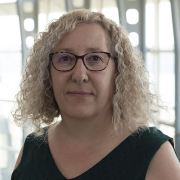 https://www-iuem.univ-brest.fr/lemar/wp-content/uploads/2018/10/Poullaouec_Marie-Aude-main.jpg
1080
1920
sherve@univ-brest.fr
https://www-iuem.univ-brest.fr/lemar/wp-content/uploads/2018/10/logo-lemar-big.png
sherve@univ-brest.fr2018-10-29 10:15:392023-07-11 11:36:32Marie-Aude POULLAOUEC
https://www-iuem.univ-brest.fr/lemar/wp-content/uploads/2018/10/Poullaouec_Marie-Aude-main.jpg
1080
1920
sherve@univ-brest.fr
https://www-iuem.univ-brest.fr/lemar/wp-content/uploads/2018/10/logo-lemar-big.png
sherve@univ-brest.fr2018-10-29 10:15:392023-07-11 11:36:32Marie-Aude POULLAOUEC https://www-iuem.univ-brest.fr/lemar/wp-content/uploads/2018/06/Roudaut_Gildas-main.jpg
1080
1920
sherve@univ-brest.fr
https://www-iuem.univ-brest.fr/lemar/wp-content/uploads/2018/10/logo-lemar-big.png
sherve@univ-brest.fr2018-06-18 17:26:532021-01-04 17:13:29Gildas ROUDAUT
https://www-iuem.univ-brest.fr/lemar/wp-content/uploads/2018/06/Roudaut_Gildas-main.jpg
1080
1920
sherve@univ-brest.fr
https://www-iuem.univ-brest.fr/lemar/wp-content/uploads/2018/10/logo-lemar-big.png
sherve@univ-brest.fr2018-06-18 17:26:532021-01-04 17:13:29Gildas ROUDAUT https://www-iuem.univ-brest.fr/lemar/wp-content/uploads/2022/11/Al-Mouatamid_Youssef_main.jpg
1080
1920
sherve@univ-brest.fr
https://www-iuem.univ-brest.fr/lemar/wp-content/uploads/2018/10/logo-lemar-big.png
sherve@univ-brest.fr2022-11-18 15:48:082022-11-18 15:54:11Youssef AL MOUATAMID
https://www-iuem.univ-brest.fr/lemar/wp-content/uploads/2022/11/Al-Mouatamid_Youssef_main.jpg
1080
1920
sherve@univ-brest.fr
https://www-iuem.univ-brest.fr/lemar/wp-content/uploads/2018/10/logo-lemar-big.png
sherve@univ-brest.fr2022-11-18 15:48:082022-11-18 15:54:11Youssef AL MOUATAMID https://www-iuem.univ-brest.fr/lemar/wp-content/uploads/2024/11/Annaelle-Anquet-photo.jpg
1080
1920
Sebastien Herve
https://www-iuem.univ-brest.fr/lemar/wp-content/uploads/2018/10/logo-lemar-big.png
Sebastien Herve2024-11-27 11:43:592024-11-27 11:50:12Annaëlle ANQUET
https://www-iuem.univ-brest.fr/lemar/wp-content/uploads/2024/11/Annaelle-Anquet-photo.jpg
1080
1920
Sebastien Herve
https://www-iuem.univ-brest.fr/lemar/wp-content/uploads/2018/10/logo-lemar-big.png
Sebastien Herve2024-11-27 11:43:592024-11-27 11:50:12Annaëlle ANQUET https://www-iuem.univ-brest.fr/lemar/wp-content/uploads/2024/11/Barriere_Guerric-main.jpg
1080
1920
Sebastien Herve
https://www-iuem.univ-brest.fr/lemar/wp-content/uploads/2018/10/logo-lemar-big.png
Sebastien Herve2024-11-19 10:53:082024-11-19 10:53:30Guerric BARRIÈRE
https://www-iuem.univ-brest.fr/lemar/wp-content/uploads/2024/11/Barriere_Guerric-main.jpg
1080
1920
Sebastien Herve
https://www-iuem.univ-brest.fr/lemar/wp-content/uploads/2018/10/logo-lemar-big.png
Sebastien Herve2024-11-19 10:53:082024-11-19 10:53:30Guerric BARRIÈRE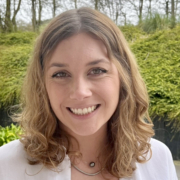 https://www-iuem.univ-brest.fr/lemar/wp-content/uploads/2023/12/Bassez_Marie.jpg
1080
1920
Sebastien Herve
https://www-iuem.univ-brest.fr/lemar/wp-content/uploads/2018/10/logo-lemar-big.png
Sebastien Herve2023-12-06 15:49:282023-12-06 15:50:01Marie BASSEZ
https://www-iuem.univ-brest.fr/lemar/wp-content/uploads/2023/12/Bassez_Marie.jpg
1080
1920
Sebastien Herve
https://www-iuem.univ-brest.fr/lemar/wp-content/uploads/2018/10/logo-lemar-big.png
Sebastien Herve2023-12-06 15:49:282023-12-06 15:50:01Marie BASSEZ https://www-iuem.univ-brest.fr/lemar/wp-content/uploads/2018/04/generic-lemar-man.png
1080
1920
Sebastien Herve
https://www-iuem.univ-brest.fr/lemar/wp-content/uploads/2018/10/logo-lemar-big.png
Sebastien Herve2025-02-06 09:36:192025-02-06 09:36:19Mathieu BIANIC
https://www-iuem.univ-brest.fr/lemar/wp-content/uploads/2018/04/generic-lemar-man.png
1080
1920
Sebastien Herve
https://www-iuem.univ-brest.fr/lemar/wp-content/uploads/2018/10/logo-lemar-big.png
Sebastien Herve2025-02-06 09:36:192025-02-06 09:36:19Mathieu BIANIC https://www-iuem.univ-brest.fr/lemar/wp-content/uploads/2024/04/Biteye_Amadou_main.jpg
1080
1920
Sebastien Herve
https://www-iuem.univ-brest.fr/lemar/wp-content/uploads/2018/10/logo-lemar-big.png
Sebastien Herve2024-04-17 15:07:272024-05-27 14:43:03Amadou BITEYE
https://www-iuem.univ-brest.fr/lemar/wp-content/uploads/2024/04/Biteye_Amadou_main.jpg
1080
1920
Sebastien Herve
https://www-iuem.univ-brest.fr/lemar/wp-content/uploads/2018/10/logo-lemar-big.png
Sebastien Herve2024-04-17 15:07:272024-05-27 14:43:03Amadou BITEYE https://www-iuem.univ-brest.fr/lemar/wp-content/uploads/2024/10/Bizien_Anaelle-main.jpg
1080
1920
Sebastien Herve
https://www-iuem.univ-brest.fr/lemar/wp-content/uploads/2018/10/logo-lemar-big.png
Sebastien Herve2024-10-17 13:47:212024-11-21 16:51:22Anaëlle BIZIEN
https://www-iuem.univ-brest.fr/lemar/wp-content/uploads/2024/10/Bizien_Anaelle-main.jpg
1080
1920
Sebastien Herve
https://www-iuem.univ-brest.fr/lemar/wp-content/uploads/2018/10/logo-lemar-big.png
Sebastien Herve2024-10-17 13:47:212024-11-21 16:51:22Anaëlle BIZIEN https://www-iuem.univ-brest.fr/lemar/wp-content/uploads/2024/10/Cloirec-Kimberley-main.jpg
1080
1920
Sebastien Herve
https://www-iuem.univ-brest.fr/lemar/wp-content/uploads/2018/10/logo-lemar-big.png
Sebastien Herve2024-10-18 14:31:302024-10-18 14:37:07Kimberley CLOIREC
https://www-iuem.univ-brest.fr/lemar/wp-content/uploads/2024/10/Cloirec-Kimberley-main.jpg
1080
1920
Sebastien Herve
https://www-iuem.univ-brest.fr/lemar/wp-content/uploads/2018/10/logo-lemar-big.png
Sebastien Herve2024-10-18 14:31:302024-10-18 14:37:07Kimberley CLOIREC https://www-iuem.univ-brest.fr/lemar/wp-content/uploads/2021/09/diop-mamie-souadou.jpg
1080
1920
sherve@univ-brest.fr
https://www-iuem.univ-brest.fr/lemar/wp-content/uploads/2018/10/logo-lemar-big.png
sherve@univ-brest.fr2021-09-15 17:22:282021-10-11 14:34:29Mamie Souadou DIOP
https://www-iuem.univ-brest.fr/lemar/wp-content/uploads/2021/09/diop-mamie-souadou.jpg
1080
1920
sherve@univ-brest.fr
https://www-iuem.univ-brest.fr/lemar/wp-content/uploads/2018/10/logo-lemar-big.png
sherve@univ-brest.fr2021-09-15 17:22:282021-10-11 14:34:29Mamie Souadou DIOP https://www-iuem.univ-brest.fr/lemar/wp-content/uploads/2023/05/El-Vadhel-Hammoud.png
1080
1920
sherve@univ-brest.fr
https://www-iuem.univ-brest.fr/lemar/wp-content/uploads/2018/10/logo-lemar-big.png
sherve@univ-brest.fr2023-05-23 11:09:512023-05-23 11:28:59Hammoud EL VADHEL
https://www-iuem.univ-brest.fr/lemar/wp-content/uploads/2023/05/El-Vadhel-Hammoud.png
1080
1920
sherve@univ-brest.fr
https://www-iuem.univ-brest.fr/lemar/wp-content/uploads/2018/10/logo-lemar-big.png
sherve@univ-brest.fr2023-05-23 11:09:512023-05-23 11:28:59Hammoud EL VADHEL https://www-iuem.univ-brest.fr/lemar/wp-content/uploads/2023/12/George-Victorine.jpg
1080
1920
Sebastien Herve
https://www-iuem.univ-brest.fr/lemar/wp-content/uploads/2018/10/logo-lemar-big.png
Sebastien Herve2023-12-06 16:29:562023-12-06 16:30:52Victorine GEORGE
https://www-iuem.univ-brest.fr/lemar/wp-content/uploads/2023/12/George-Victorine.jpg
1080
1920
Sebastien Herve
https://www-iuem.univ-brest.fr/lemar/wp-content/uploads/2018/10/logo-lemar-big.png
Sebastien Herve2023-12-06 16:29:562023-12-06 16:30:52Victorine GEORGE https://www-iuem.univ-brest.fr/lemar/wp-content/uploads/2023/12/Guillot-Alice.jpg
1080
1920
Sebastien Herve
https://www-iuem.univ-brest.fr/lemar/wp-content/uploads/2018/10/logo-lemar-big.png
Sebastien Herve2023-12-07 09:19:172023-12-07 09:51:27Alice GUILLOT
https://www-iuem.univ-brest.fr/lemar/wp-content/uploads/2023/12/Guillot-Alice.jpg
1080
1920
Sebastien Herve
https://www-iuem.univ-brest.fr/lemar/wp-content/uploads/2018/10/logo-lemar-big.png
Sebastien Herve2023-12-07 09:19:172023-12-07 09:51:27Alice GUILLOT https://www-iuem.univ-brest.fr/lemar/wp-content/uploads/2024/10/Herteman-billottet_hugo-Main.jpg
1080
1920
Sebastien Herve
https://www-iuem.univ-brest.fr/lemar/wp-content/uploads/2018/10/logo-lemar-big.png
Sebastien Herve2024-10-17 17:04:422024-10-17 17:04:42Hugo HERTEMAN-BILLOTTET
https://www-iuem.univ-brest.fr/lemar/wp-content/uploads/2024/10/Herteman-billottet_hugo-Main.jpg
1080
1920
Sebastien Herve
https://www-iuem.univ-brest.fr/lemar/wp-content/uploads/2018/10/logo-lemar-big.png
Sebastien Herve2024-10-17 17:04:422024-10-17 17:04:42Hugo HERTEMAN-BILLOTTET https://www-iuem.univ-brest.fr/lemar/wp-content/uploads/2023/03/Jager-Alina-main.jpg
1080
1920
sherve@univ-brest.fr
https://www-iuem.univ-brest.fr/lemar/wp-content/uploads/2018/10/logo-lemar-big.png
sherve@univ-brest.fr2023-03-23 16:55:042023-03-27 13:12:26Alina JAGER
https://www-iuem.univ-brest.fr/lemar/wp-content/uploads/2023/03/Jager-Alina-main.jpg
1080
1920
sherve@univ-brest.fr
https://www-iuem.univ-brest.fr/lemar/wp-content/uploads/2018/10/logo-lemar-big.png
sherve@univ-brest.fr2023-03-23 16:55:042023-03-27 13:12:26Alina JAGER https://www-iuem.univ-brest.fr/lemar/wp-content/uploads/2018/04/generic-lemar-woman.png
1080
1920
Sebastien Herve
https://www-iuem.univ-brest.fr/lemar/wp-content/uploads/2018/10/logo-lemar-big.png
Sebastien Herve2025-02-06 09:20:102025-02-06 09:25:34Chaymae KAOURI
https://www-iuem.univ-brest.fr/lemar/wp-content/uploads/2018/04/generic-lemar-woman.png
1080
1920
Sebastien Herve
https://www-iuem.univ-brest.fr/lemar/wp-content/uploads/2018/10/logo-lemar-big.png
Sebastien Herve2025-02-06 09:20:102025-02-06 09:25:34Chaymae KAOURI https://www-iuem.univ-brest.fr/lemar/wp-content/uploads/2024/10/Kerherve_Malika-main.jpg
1080
1920
Sebastien Herve
https://www-iuem.univ-brest.fr/lemar/wp-content/uploads/2018/10/logo-lemar-big.png
Sebastien Herve2024-10-08 10:38:512024-10-08 10:48:40Malika KERHERVÉ
https://www-iuem.univ-brest.fr/lemar/wp-content/uploads/2024/10/Kerherve_Malika-main.jpg
1080
1920
Sebastien Herve
https://www-iuem.univ-brest.fr/lemar/wp-content/uploads/2018/10/logo-lemar-big.png
Sebastien Herve2024-10-08 10:38:512024-10-08 10:48:40Malika KERHERVÉ https://www-iuem.univ-brest.fr/lemar/wp-content/uploads/2023/12/Lagunes-Maria.jpg
1080
1920
Sebastien Herve
https://www-iuem.univ-brest.fr/lemar/wp-content/uploads/2018/10/logo-lemar-big.png
Sebastien Herve2023-12-06 17:01:152023-12-06 17:06:10María José LAGUNES
https://www-iuem.univ-brest.fr/lemar/wp-content/uploads/2023/12/Lagunes-Maria.jpg
1080
1920
Sebastien Herve
https://www-iuem.univ-brest.fr/lemar/wp-content/uploads/2018/10/logo-lemar-big.png
Sebastien Herve2023-12-06 17:01:152023-12-06 17:06:10María José LAGUNES https://www-iuem.univ-brest.fr/lemar/wp-content/uploads/2022/10/Le-Moan_Eline-main.jpg
1080
1920
sherve@univ-brest.fr
https://www-iuem.univ-brest.fr/lemar/wp-content/uploads/2018/10/logo-lemar-big.png
sherve@univ-brest.fr2022-10-21 15:31:082022-10-21 15:42:21Eline LE MOAN
https://www-iuem.univ-brest.fr/lemar/wp-content/uploads/2022/10/Le-Moan_Eline-main.jpg
1080
1920
sherve@univ-brest.fr
https://www-iuem.univ-brest.fr/lemar/wp-content/uploads/2018/10/logo-lemar-big.png
sherve@univ-brest.fr2022-10-21 15:31:082022-10-21 15:42:21Eline LE MOAN https://www-iuem.univ-brest.fr/lemar/wp-content/uploads/2018/04/generic-lemar-woman.png
1080
1920
sherve@univ-brest.fr
https://www-iuem.univ-brest.fr/lemar/wp-content/uploads/2018/10/logo-lemar-big.png
sherve@univ-brest.fr2018-10-29 10:15:362022-01-05 09:45:44Anne MOUGET
https://www-iuem.univ-brest.fr/lemar/wp-content/uploads/2018/04/generic-lemar-woman.png
1080
1920
sherve@univ-brest.fr
https://www-iuem.univ-brest.fr/lemar/wp-content/uploads/2018/10/logo-lemar-big.png
sherve@univ-brest.fr2018-10-29 10:15:362022-01-05 09:45:44Anne MOUGET https://www-iuem.univ-brest.fr/lemar/wp-content/uploads/2018/04/generic-lemar-man.png
1080
1920
Sebastien Herve
https://www-iuem.univ-brest.fr/lemar/wp-content/uploads/2018/10/logo-lemar-big.png
Sebastien Herve2024-12-10 09:18:352024-12-10 09:23:40Nestor NGOUA ABA’A
https://www-iuem.univ-brest.fr/lemar/wp-content/uploads/2018/04/generic-lemar-man.png
1080
1920
Sebastien Herve
https://www-iuem.univ-brest.fr/lemar/wp-content/uploads/2018/10/logo-lemar-big.png
Sebastien Herve2024-12-10 09:18:352024-12-10 09:23:40Nestor NGOUA ABA’A https://www-iuem.univ-brest.fr/lemar/wp-content/uploads/2024/10/Perdereau-Margot.jpg
1080
1920
Sebastien Herve
https://www-iuem.univ-brest.fr/lemar/wp-content/uploads/2018/10/logo-lemar-big.png
Sebastien Herve2024-10-08 10:01:472025-02-06 09:27:14Margot PERDEREAU
https://www-iuem.univ-brest.fr/lemar/wp-content/uploads/2024/10/Perdereau-Margot.jpg
1080
1920
Sebastien Herve
https://www-iuem.univ-brest.fr/lemar/wp-content/uploads/2018/10/logo-lemar-big.png
Sebastien Herve2024-10-08 10:01:472025-02-06 09:27:14Margot PERDEREAU https://www-iuem.univ-brest.fr/lemar/wp-content/uploads/2018/04/generic-lemar-woman.png
1080
1920
Sebastien Herve
https://www-iuem.univ-brest.fr/lemar/wp-content/uploads/2018/10/logo-lemar-big.png
Sebastien Herve2024-11-20 10:37:542024-11-20 10:45:07Mya REYNAUD
https://www-iuem.univ-brest.fr/lemar/wp-content/uploads/2018/04/generic-lemar-woman.png
1080
1920
Sebastien Herve
https://www-iuem.univ-brest.fr/lemar/wp-content/uploads/2018/10/logo-lemar-big.png
Sebastien Herve2024-11-20 10:37:542024-11-20 10:45:07Mya REYNAUD https://www-iuem.univ-brest.fr/lemar/wp-content/uploads/2023/02/rioual_fanny_main.jpg
1080
1920
sherve@univ-brest.fr
https://www-iuem.univ-brest.fr/lemar/wp-content/uploads/2018/10/logo-lemar-big.png
sherve@univ-brest.fr2023-02-14 12:57:052024-09-19 13:47:29Fanny RIOUAL
https://www-iuem.univ-brest.fr/lemar/wp-content/uploads/2023/02/rioual_fanny_main.jpg
1080
1920
sherve@univ-brest.fr
https://www-iuem.univ-brest.fr/lemar/wp-content/uploads/2018/10/logo-lemar-big.png
sherve@univ-brest.fr2023-02-14 12:57:052024-09-19 13:47:29Fanny RIOUAL https://www-iuem.univ-brest.fr/lemar/wp-content/uploads/2024/10/Santoni_Ghjuvan-main.jpg
1080
1920
Sebastien Herve
https://www-iuem.univ-brest.fr/lemar/wp-content/uploads/2018/10/logo-lemar-big.png
Sebastien Herve2024-10-18 11:05:032024-10-24 12:11:24Ghjuvan SANTONI-GUICHARD
https://www-iuem.univ-brest.fr/lemar/wp-content/uploads/2024/10/Santoni_Ghjuvan-main.jpg
1080
1920
Sebastien Herve
https://www-iuem.univ-brest.fr/lemar/wp-content/uploads/2018/10/logo-lemar-big.png
Sebastien Herve2024-10-18 11:05:032024-10-24 12:11:24Ghjuvan SANTONI-GUICHARD https://www-iuem.univ-brest.fr/lemar/wp-content/uploads/2021/05/Uboldi-thomas.jpg
1080
1920
sherve@univ-brest.fr
https://www-iuem.univ-brest.fr/lemar/wp-content/uploads/2018/10/logo-lemar-big.png
sherve@univ-brest.fr2021-05-07 10:46:362022-01-31 15:15:21Thomas UBOLDI
https://www-iuem.univ-brest.fr/lemar/wp-content/uploads/2021/05/Uboldi-thomas.jpg
1080
1920
sherve@univ-brest.fr
https://www-iuem.univ-brest.fr/lemar/wp-content/uploads/2018/10/logo-lemar-big.png
sherve@univ-brest.fr2021-05-07 10:46:362022-01-31 15:15:21Thomas UBOLDI https://www-iuem.univ-brest.fr/lemar/wp-content/uploads/2024/02/IMG_20240222_195314601-scaled.jpg
1920
2560
sherve@univ-brest.fr
https://www-iuem.univ-brest.fr/lemar/wp-content/uploads/2018/10/logo-lemar-big.png
sherve@univ-brest.fr2021-04-20 10:46:262022-10-21 11:29:38Anthony VOISIN
https://www-iuem.univ-brest.fr/lemar/wp-content/uploads/2024/02/IMG_20240222_195314601-scaled.jpg
1920
2560
sherve@univ-brest.fr
https://www-iuem.univ-brest.fr/lemar/wp-content/uploads/2018/10/logo-lemar-big.png
sherve@univ-brest.fr2021-04-20 10:46:262022-10-21 11:29:38Anthony VOISIN https://www-iuem.univ-brest.fr/lemar/wp-content/uploads/2023/12/Wahbi-Fusier-Kenza.jpg
1080
1920
Sebastien Herve
https://www-iuem.univ-brest.fr/lemar/wp-content/uploads/2018/10/logo-lemar-big.png
Sebastien Herve2023-12-11 10:59:522023-12-11 11:06:14Kenza WAHBI-FUSIER
https://www-iuem.univ-brest.fr/lemar/wp-content/uploads/2023/12/Wahbi-Fusier-Kenza.jpg
1080
1920
Sebastien Herve
https://www-iuem.univ-brest.fr/lemar/wp-content/uploads/2018/10/logo-lemar-big.png
Sebastien Herve2023-12-11 10:59:522023-12-11 11:06:14Kenza WAHBI-FUSIER https://www-iuem.univ-brest.fr/lemar/wp-content/uploads/2025/03/Presentation1.jpg
720
1280
sherve@univ-brest.fr
https://www-iuem.univ-brest.fr/lemar/wp-content/uploads/2018/10/logo-lemar-big.png
sherve@univ-brest.fr2018-10-29 10:36:282025-02-06 15:34:36Lucien BESNARD
https://www-iuem.univ-brest.fr/lemar/wp-content/uploads/2025/03/Presentation1.jpg
720
1280
sherve@univ-brest.fr
https://www-iuem.univ-brest.fr/lemar/wp-content/uploads/2018/10/logo-lemar-big.png
sherve@univ-brest.fr2018-10-29 10:36:282025-02-06 15:34:36Lucien BESNARD https://www-iuem.univ-brest.fr/lemar/wp-content/uploads/2024/11/Carranza_Daniela-main.jpg
1080
1920
Sebastien Herve
https://www-iuem.univ-brest.fr/lemar/wp-content/uploads/2018/10/logo-lemar-big.png
Sebastien Herve2024-11-20 11:12:162024-11-20 11:12:16Daniela CARRANZA
https://www-iuem.univ-brest.fr/lemar/wp-content/uploads/2024/11/Carranza_Daniela-main.jpg
1080
1920
Sebastien Herve
https://www-iuem.univ-brest.fr/lemar/wp-content/uploads/2018/10/logo-lemar-big.png
Sebastien Herve2024-11-20 11:12:162024-11-20 11:12:16Daniela CARRANZA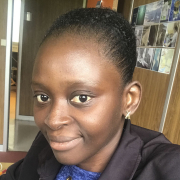 https://www-iuem.univ-brest.fr/lemar/wp-content/uploads/2018/10/diogoul-ndague.jpg
1080
1920
sherve@univ-brest.fr
https://www-iuem.univ-brest.fr/lemar/wp-content/uploads/2018/10/logo-lemar-big.png
sherve@univ-brest.fr2018-10-29 10:36:132021-09-20 09:47:05Ndague DIOGOUL
https://www-iuem.univ-brest.fr/lemar/wp-content/uploads/2018/10/diogoul-ndague.jpg
1080
1920
sherve@univ-brest.fr
https://www-iuem.univ-brest.fr/lemar/wp-content/uploads/2018/10/logo-lemar-big.png
sherve@univ-brest.fr2018-10-29 10:36:132021-09-20 09:47:05Ndague DIOGOUL https://www-iuem.univ-brest.fr/lemar/wp-content/uploads/2018/10/Djeghri_Nicolas-main.jpg
1080
1920
sherve@univ-brest.fr
https://www-iuem.univ-brest.fr/lemar/wp-content/uploads/2018/10/logo-lemar-big.png
sherve@univ-brest.fr2018-10-29 10:36:142024-11-29 08:27:05Nicolas DJEGHRI
https://www-iuem.univ-brest.fr/lemar/wp-content/uploads/2018/10/Djeghri_Nicolas-main.jpg
1080
1920
sherve@univ-brest.fr
https://www-iuem.univ-brest.fr/lemar/wp-content/uploads/2018/10/logo-lemar-big.png
sherve@univ-brest.fr2018-10-29 10:36:142024-11-29 08:27:05Nicolas DJEGHRI https://www-iuem.univ-brest.fr/lemar/wp-content/uploads/2024/03/Garcia-Quintas_Antonio-main.jpg
1080
1920
Sebastien Herve
https://www-iuem.univ-brest.fr/lemar/wp-content/uploads/2018/10/logo-lemar-big.png
Sebastien Herve2024-03-04 17:40:482024-03-04 17:41:10Antonio GARCIA QUINTAS
https://www-iuem.univ-brest.fr/lemar/wp-content/uploads/2024/03/Garcia-Quintas_Antonio-main.jpg
1080
1920
Sebastien Herve
https://www-iuem.univ-brest.fr/lemar/wp-content/uploads/2018/10/logo-lemar-big.png
Sebastien Herve2024-03-04 17:40:482024-03-04 17:41:10Antonio GARCIA QUINTAS https://www-iuem.univ-brest.fr/lemar/wp-content/uploads/2018/06/Jezequel_Youenn-main.jpg
1080
1920
sherve@univ-brest.fr
https://www-iuem.univ-brest.fr/lemar/wp-content/uploads/2018/10/logo-lemar-big.png
sherve@univ-brest.fr2018-06-18 17:25:452024-11-22 09:09:27Youenn JEZEQUEL
https://www-iuem.univ-brest.fr/lemar/wp-content/uploads/2018/06/Jezequel_Youenn-main.jpg
1080
1920
sherve@univ-brest.fr
https://www-iuem.univ-brest.fr/lemar/wp-content/uploads/2018/10/logo-lemar-big.png
sherve@univ-brest.fr2018-06-18 17:25:452024-11-22 09:09:27Youenn JEZEQUEL https://www-iuem.univ-brest.fr/lemar/wp-content/uploads/2025/01/Session-5-Policy-and-conservation-_23102024_dt-29-scaled.jpg
1707
2560
Sebastien Herve
https://www-iuem.univ-brest.fr/lemar/wp-content/uploads/2018/10/logo-lemar-big.png
Sebastien Herve2025-03-07 08:11:032025-03-07 08:11:03Nathan PACOUREAU
https://www-iuem.univ-brest.fr/lemar/wp-content/uploads/2025/01/Session-5-Policy-and-conservation-_23102024_dt-29-scaled.jpg
1707
2560
Sebastien Herve
https://www-iuem.univ-brest.fr/lemar/wp-content/uploads/2018/10/logo-lemar-big.png
Sebastien Herve2025-03-07 08:11:032025-03-07 08:11:03Nathan PACOUREAUCopyright : Laboratoire LEMAR- 2018
